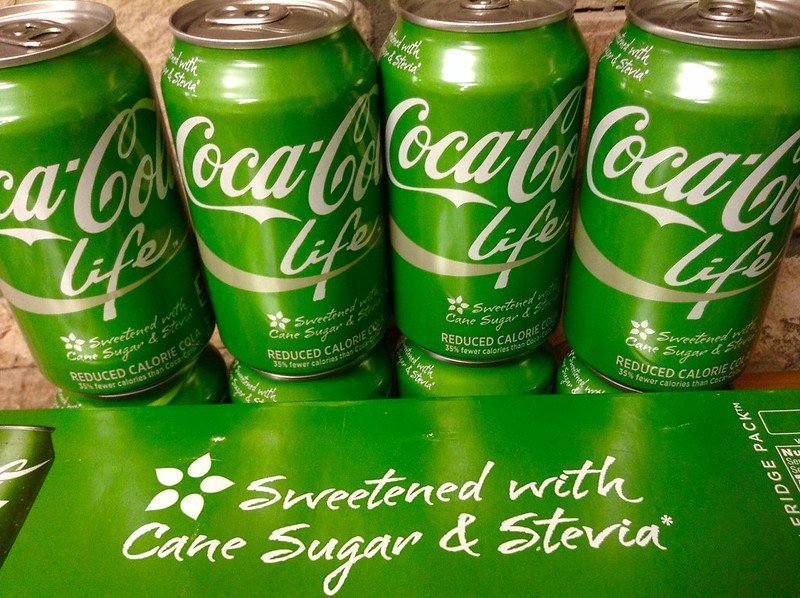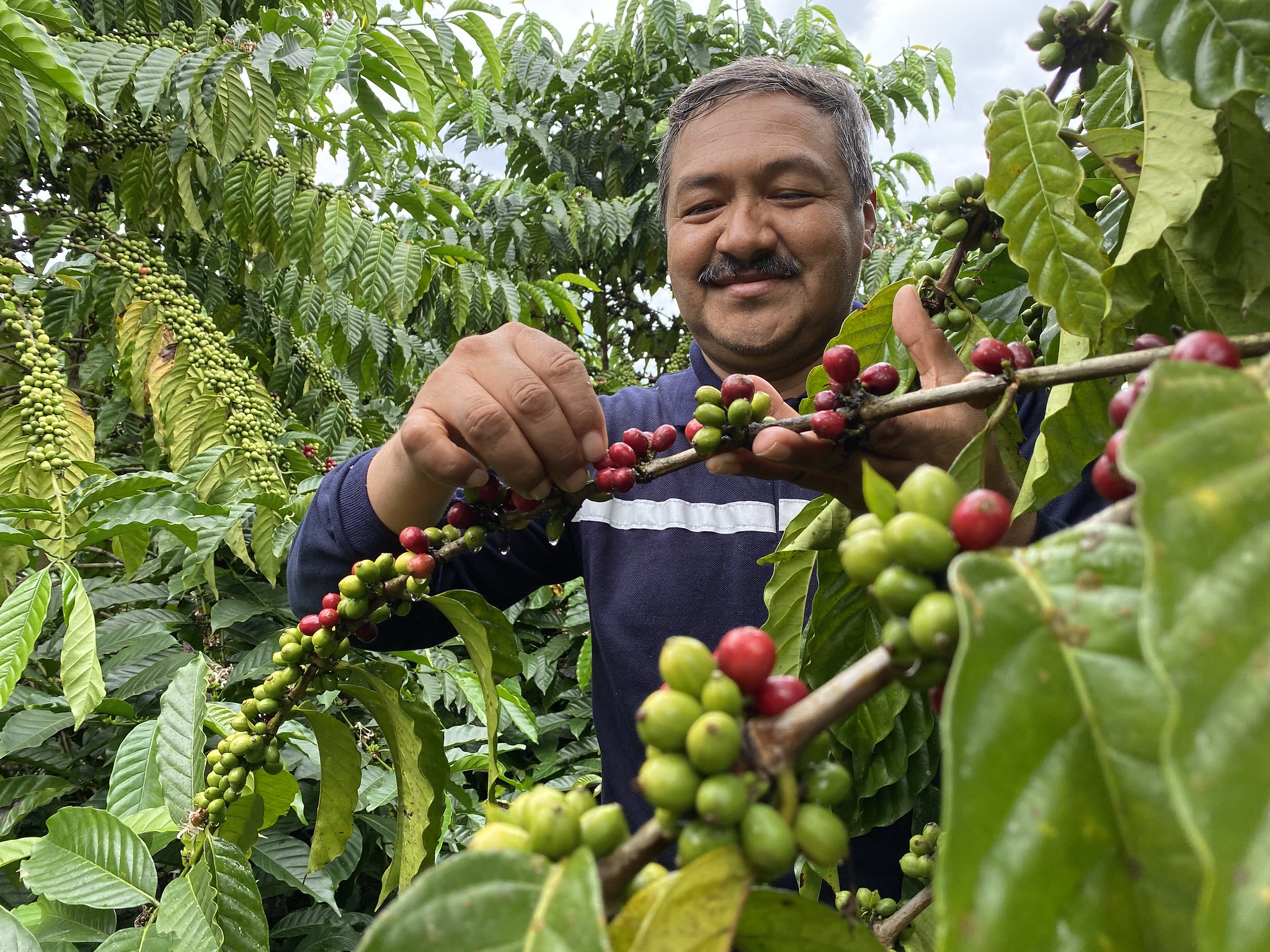What Is Greenwashing? Top Examples You Need To Know
Nestlé S.A.

You may be familiar with whitewashing in the corporate realm; a process of covering up or downplaying wrongdoing by offering an inaccurate depiction of the facts. However, as many people are now aware, green is the new white.
Organisations can use the deceptive tactic of greenwashing to deceive consumers who prefer environmentally-friendly products and services - this is when they invest more in marketing themselves as caring for the environment than actually doing so. It’s a shallow ploy that misleads the public, allocating their resources towards superficial messaging instead of enacting meaningful change.
From a corporate performance perspective, environmental, social and governance (ESG) ratings are evolving quickly to provide a reliable indicator of transition to sustainability, although “tightening” of what constitutes ESG compliance is still a work in progress, and examples of greenwashed funds are relatively common. From the consumer perspective, here we will explain greenwashing, along with some popular greenwash examples and what brands can do to avoid it, including how they can genuinely reduce their carbon footprint, mitigate the impacts of climate crisis as well as uphold environmental stewardship.
What Is Greenwashing?
In 1986, Jay Westerveld pioneered the concept of ‘greenwashing’ in response to hotels’ “save the towel” movement, which only served to save them money on laundry. This was during a time when people relied heavily upon television, radio and print media for news - almost completely unable to verify whether what they read or heard held any truth. Nevertheless, this idea still resonates today, even with our newfound ability to easily fact check information from reliable sources.
Through the years, many companies have been exposed for their misguided greenwashing practices. A clear example of this occurred in the mid-1980s when fossil fuel company Chevron released a series of costly commercials and print ads to market environmental commitment as part of its marketing campaigns, even though it was actually breaking federal regulations such as the Clean Air Act, Clean Water Act, and spilling oil into wildlife refuges. That egregious campaign became known forever after as “People Do.”
Regrettably, Chevron wasn’t the only company that was guilty of making audacious statements. In 1991, DuPontunveiled its double-hulled oil tankers with advertisements depicting marine creatures frolicking in tune to Beethoven’s “Ode to Joy”, when it turns out they were actually the largest corporate polluter within America at that time.
Another greenwashing example is Exxon Mobil, the American multinational oil and gas corporation, who claimed they were cutting back on their greenhouse gas emissions while in reality they had increased them, and were taken to court as a result.
Volkswagen also faced scrutiny for their emissions scandal, where they manipulated emissions data to appear more environmentally friendly. The US Environmental Protection Agency uncovered the discrepancy between Volkswagen's claims of carbon offsets and the actual pollution levels emitted by their vehicles, which were significantly higher than permissible limits.
What Are The Main Greenwashing Tactics Companies Use?
Definition of Greenwashing
Greenwashing is a marketing practice, where companies make false or misleading environmental claims about their products, services, or operations or sustainability efforts to appear more sustainable and eco-friendly than they actually are. This deceptive tactic can involve using vague or misleading language, making unsubstantiated claims, or hiding behind certifications or labels that lack genuine environmental benefits. Essentially, greenwashing is about creating a facade of environmental responsibility without making any substantial efforts to reduce environmental impact. This practice not only misleads consumers but also undermines the efforts of genuinely sustainable businesses.
What Kinds Of Misleading Environmental Claims Are There?
There can be many kinds, but if we essentially reduce it, there are two main types:
Passing off their cost-cutting measures as ‘eco-friendly initiatives’ - for instance, claiming credit for an existing production method that eliminates the use of shrink wrap in packaging. This deceptive greenwashing is a common occurrence across many industries and should be called out so consumers can make informed decisions.
Deceiving consumers regarding the eco-friendliness of products - by using phrases such as “Best in class ecology”, packaging that portrays green fields and flowers, or certifications from ecomaniacs. Companies may engage in these tactics to obscure their environmentally damaging practices from scrutiny. This is a more nefarious form of greenwashing.
Green but Vague Language
Green but vague language is a common form of greenwashing where companies use buzzwords like “green,” “sustainable,” or “eco-friendly” without providing any concrete evidence or standards to back up their claims. This tactic can be seen in product labels, advertising, or company statements that make sweeping claims about their environmental credentials without offering any substance. For instance, a product might be labeled as “natural” or “eco-friendly” without any explanation of what makes it so. This lack of transparency makes it difficult for consumers to verify the authenticity of the claims, allowing companies to appear more environmentally responsible than they actually are.
Misleading or False Data
Misleading or false data is another form of greenwashing where companies manipulate or distort data to make their environmental claims appear more impressive than they actually are. This can include cherry-picking data, using outdated information, or making claims that are not supported by scientific evidence. For example, a company might highlight a reduction in carbon emissions in one area while ignoring increases in another, or they might use data from a particularly favorable time period to paint a misleading picture of their overall environmental impact. These tactics create a false sense of environmental responsibility and can deceive consumers into supporting companies that are not as green as they claim to be.
READ MORE: 5 Best Sustainability Consultants in the UK
Greenwashing Examples
Unfortunately, staying true to your green product claims is an infrequent occurrence. Companies often claim a 'positive environmental impact' but fail to deliver on those promises. To exemplify this, here are some instances of outright greenwashing cases where firms have employed deceptive, eco-friendly marketing tactics to simply drive up sales while their practices remain environmentally unfriendly in reality.
Nestlé
In 2018, Nestléits lofty goal of making all their packaging 100% recyclable or reusable by 2025 - yet environmental groups and critics called them out for providing no clear targets or timeline to accompany this ambition, nor any extra initiatives that would make it easier for consumers to recycle.
Greenpeaceto Nestlé's statement on plastic packaging with a critical remark of their own, noting that the steps taken by Nestlé will not lead to much progress in reducing single-use plastics. In Break Free From Plastic's (BFFF) 2020 annual, it was revealed that for the third consecutive year Nestlè, Coca-Cola and PepsiCo were again named as some of the biggest contributors to plastic pollution across the globe.
[Coca Cola and Plastic Waste](https://knowesg.com/ esg-ratings/coca-cola)
In the BFFF report, Coca-Cola retained its disgraceful crown as the world's biggest plastic polluter for a second consecutive year. This past year, they sent shockwaves through communities when they refused to discontinue their notorious single-use plastic bottles despite public outcry - claiming that those products are especially favoured by customers.
Nonetheless, the organisation is determined that it has made progress in fighting packaging waste. A representative proclaimed, “We have a pledge to ensure we recover each bottle by 2030 so that nothing winds up being thrown away or dumped into our oceans and all plastic can be reprocessed into new bottles. At present, 100% recycled plastic bottles are available across 18 markets worldwide which will continue to extend further."
In June 2021,took legal action against the beverage giant for promoting false sustainability and environmental friendliness claims, despite being a major source of global plastic pollution.
Volkswagen
Volkswagen launched a deceptive ad campaign to obscure the fact that diesel was hazardous, claiming they had invented technology that would reduce carbon dioxide emissions and other pollutants in their vehicles. In reality, however, they had installed “defeat devices” in 11 million of their cars which allowed them to pass emissions tests while emitting up to 40 times more pollutants than U.S standards permitted. As for this fraudulent behaviour and false advertising practices, federal agencies forced Volkswagen to pay $14.7 billion as part of an agreement with regard to cheating on emissions tests and deceitful marketing strategies.
Starbucks
In 2018, Starbucks released a "straw-less lid", which was designed to reduce plastic waste. Despite the good intentions behind this item, it still contained more plastic than its predecessor which included both a straw and lid. Nevertheless, Starbucks argued that this new product is made from polypropylene - an easily recyclable material - and thus can be recycled in most major recycling infrastructures on the market today.
It was immediatelythat a mere 9% of plastic is recycled, and thus the corporation should not assume all their lids will eventually be recycled. What's more, the US exports nearly one-third of its recycling to poorer countries, essentially transferring its environmental responsibility onto them.
IKEA
In June 2020, IKEA's reputation as a sustainable major corporation was tarnished when Earthsight released alinking the furniture retailer to illegal logging in Ukraine. The Forest Stewardship Council (FSC), which certifies IKEAs wood, was cited for its lack of oversight and failure to address IKEA's sourcing of conflict wood. To add insult to injury, the 2019 construction of their "most sustainable store" yet in London only occurred after another sustainably built store from 2002 had been demolished after just 17 years.
Shell
Shell is a prime example of greenwashing in the fossil fuel industry. Despite making claims about reducing carbon emissions and shifting to renewable energy, the company has been accused of devoting only 1% of its investments to low-carbon renewable power. Shell has also refused to expand on how its economic portfolio aligns with global net-zero goals, raising questions about the sincerity of its environmental claims. While the company promotes its efforts to reduce carbon emissions, critics argue that these initiatives are minimal compared to its continued investment in fossil fuels. This discrepancy between Shell’s marketing and its actual practices highlights the deceptive nature of greenwashing.
McDonald’s
McDonald’s is another example of greenwashing in the fast food industry. The company launched a campaign to reduce single-use plastics in 2019, replacing plastic straws with paper alternatives. However, the new paper straws are not recyclable, and the company’s manufacturer and environmental experts have raised questions about their sustainability. This move has been seen as a PR stunt rather than a genuine effort to reduce waste and improve environmental credentials. While McDonald’s promotes its switch to paper straws as a step towards sustainability, the reality is that the environmental benefits are minimal, and the company continues to face criticism for its overall environmental impact.
How Brands Can Avoid Greenwashing and Improve Environmental Credentials
Here are some fundamental greenwashing tactics that brands must avoid in order to meet increasing consumer demands for transparency and sustainability:
Refrain from using vague words or phrases such as ‘eco-friendly' and ‘natural' that lack a coherent definition and cause confusion.
Be aware of the hypocrisy that exists, such as energy-efficient light bulbs produced in a factory with a poor environmental record.
Avoid branding images that misleadingly convey a positive environmental message (think exhaust pipes with flowers blooming from them).
Be wary of any product that attempts to market itself as 'eco-friendly', especially if it's something potentially hazardous. (Think eco-cigarettes, for example).
Don't use deceptive labelling that masquerades as an endorsement, but is actually fictitious.
Do not use misleading or false claims and data.
The world is fortunate to have numerous socially responsible companies actively sharing their dedication to the environment – and even those that should be but aren't. While occurrences of blatant greenwashing - intentional false claims about a product's effect on our planet - may not generally occur, there are certainly several examples that come close enough.
The use of catchphrases and jargon to hoodwink the public is a slippery slope that companies must stay away from. This means educating their marketers and informing them about promoting brands ethically.
The Washout
The few greenwashing examples mentioned above are only a portion of the deception that consumers face in today's ‘always on' product-centric advertising culture. However, whether it takes the form of obscure statements or grossly falsified information, greenwashing has become an omnipresent issue in our daily lives, and this has resulted in escalated industry awareness across all sectors.
Consequently, and with tougher regulations coming into force, organisations must evaluate and report on their sustainability claims before they can consider advertising them. Perhaps the greatest leap to make will be finding a culture of transparent corporate communication that acknowledges the failures, or ‘challenges in progress', as much as the genuine instances of sustainability.
Certainly, this will be critical to avoid hoodwinking a rising Gen Z that prioritises environmental and social values. As a European Commission report notes, “Greenwashing has increased as consumers increasingly seek to buy environmentally sound products”, perhaps the great emerging irony of our commercial times?
The Bottom Line
As society's environmental consciousness rises, people recognise greenwashing when they see it and are pushing for solutions. While this is a major step in the right direction, it can incent unethical businesses to chase profits through deceitful marketing tactics that hide their lack of sustainable practices. To protect consumers, all environmental statements must be backed up by tangible evidence verifying their authenticity, through ESG ratings systems, and by consumer pressure.
KnowESG is constantly growing its listing of Company ESG Profiles, where you can compare corporate performance and business practices across various ESG Ratings.
Frequently Asked Questions (FAQs)
What are the 4 types of greenwashing?
Companies engaged in greenwashing employ marketing strategies meant to make their products or services appear more environmentally conscious than they actually are. There are four types of such tactics:
a. Hidden trade-off: This kind of greenwashing involves spotlighting one environmentally friendly quality of a product while disregarding other environmental repercussions.
b. No proof: This type of greenwashing consists of using environmental assertions without any external verification or scientific proof to back them up.
c. Vagueness: This form of 'greenwashing' involves taking advantage of terms such as "natural" and "eco-friendly," words with no concrete definition, to deceive consumers.
d. Irrelevance: This form of greenwashing entails espousing environmental claims that are accurate on a technical level, yet lack any real significance or relevance to the product's or service's overall ecological footprint.
What are greenwashed products?
Products that are marketed as eco-friendly or sustainable, yet have a detrimental effect on the environment, are known as greenwashed. Companies behind such items may make obscure or misleading claims of being environmentally conscious; use materials and procedures with little to no sustainability benefits; but still advertise their goods in an exaggerated way as 'green'.
Companies practise greenwashing to attract customers who value sustainability and the environment, yet it can be difficult for consumers to differentiate between genuine eco-friendly or sustainable products versus those merely appearing as such. Consumers must conduct proper research and look for third-party certifications or scientific evidence supporting any environmental claims before making a purchase.






